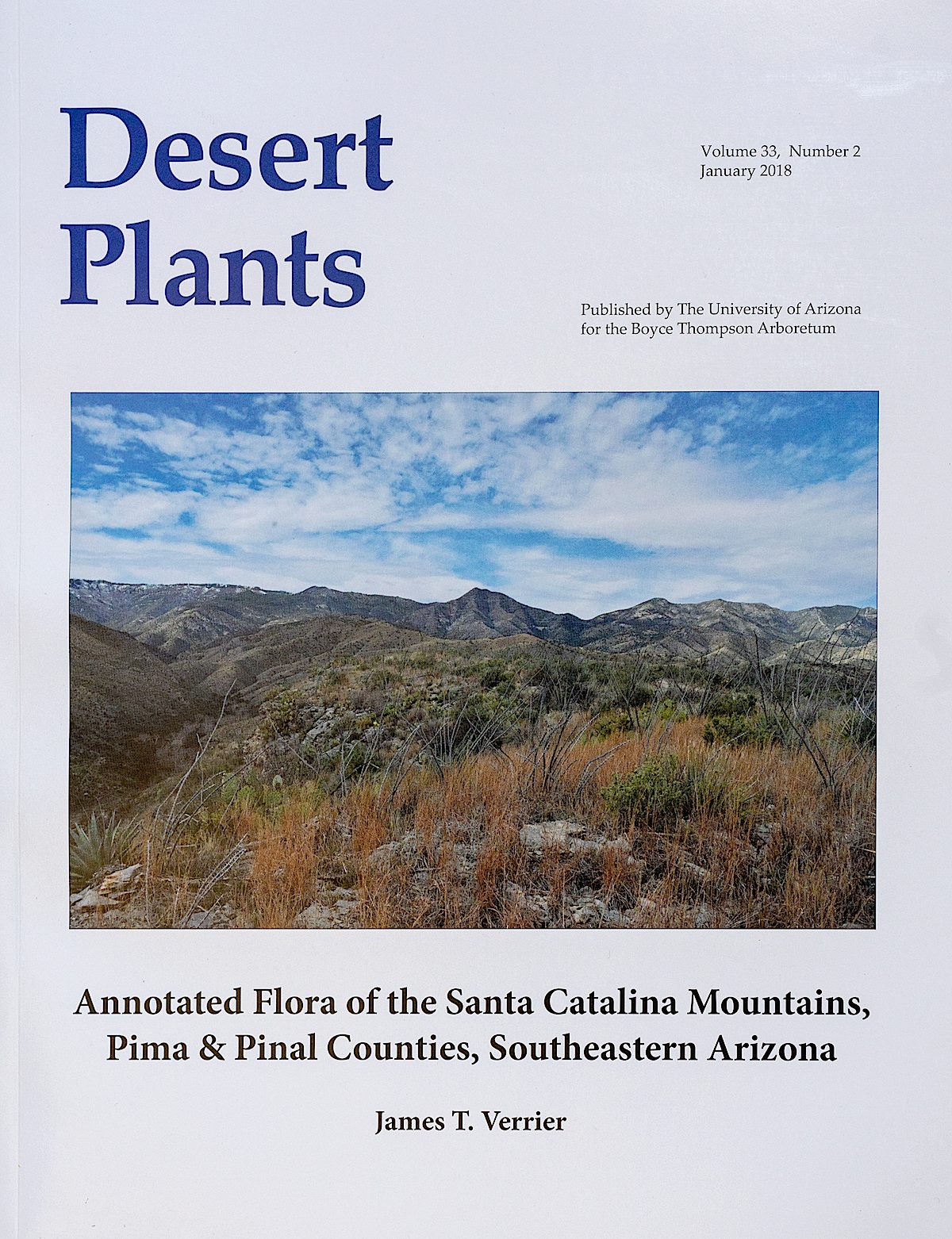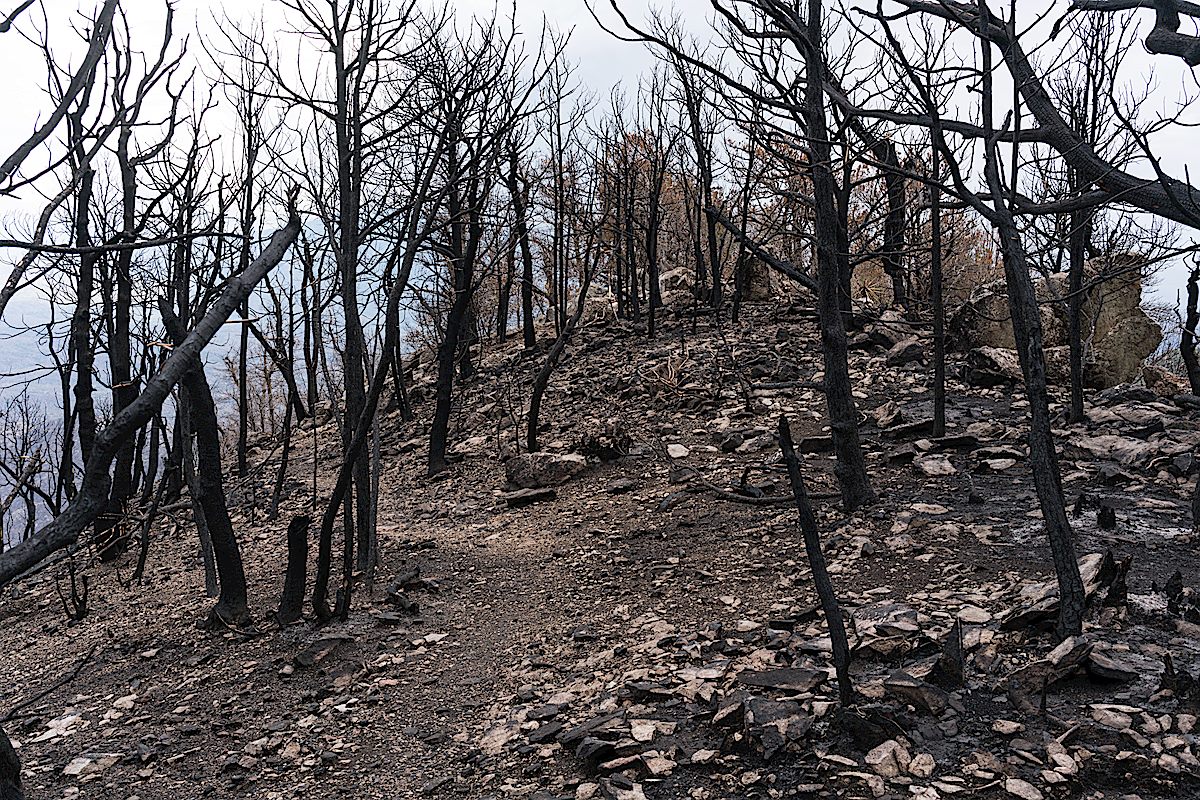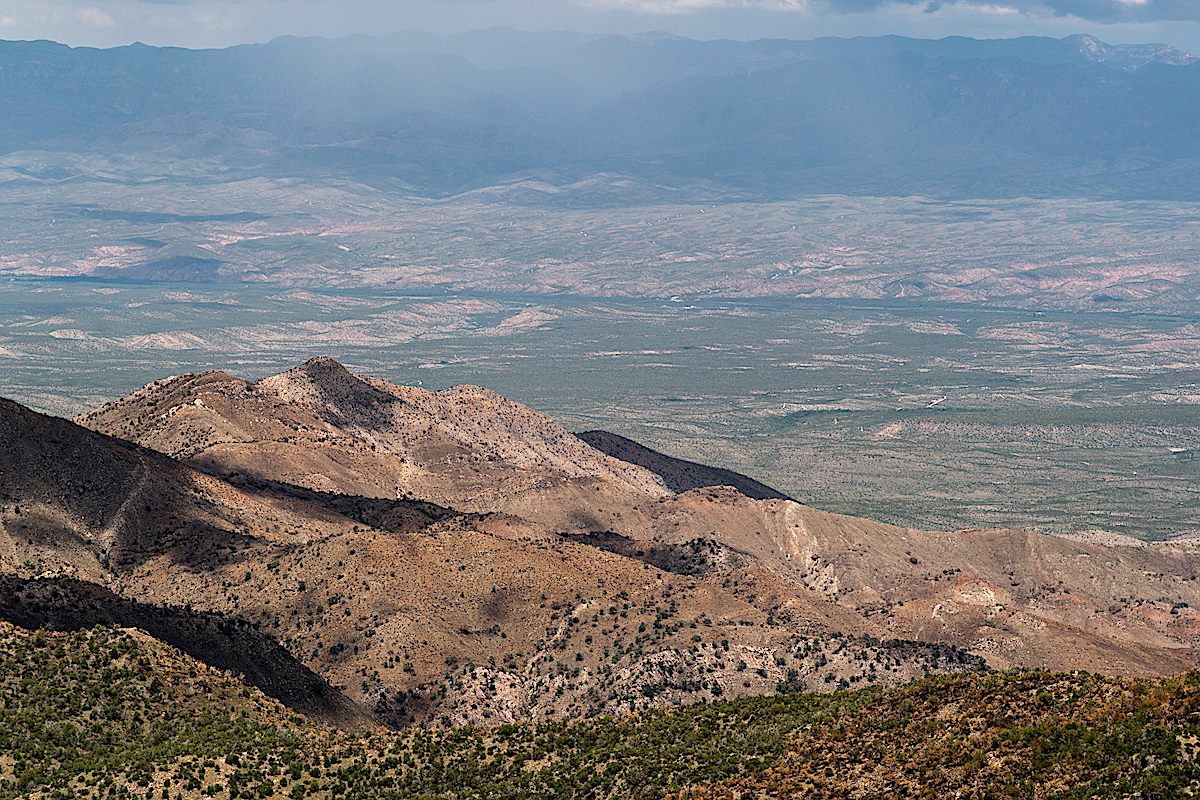
It was an absolute thrill to find that the current issue (Volume 33, Number 2, January 2018) of Desert Plants is about the Santa Catalina Mountains! I love the Catalinas and would be excited regardless of what was inside this volume, but to find pictures of lesser traveled destinations like Buehman Canyon and Burro Creek, sections on the history of botanical collection, rare plants and invasive plants and a long annotated checklist of vascular plants followed by pictures?!?! Amazing!!
Given the remote locations and large amount of material in this volume I was not completely surprised to read James T. Verrier’s notes on the effort that went into this project:
A total of 380 days of field work were conducted between April 2007 and December 2017, including over 28,000 miles of driving. Although nearly all areas of the range were visited, lesser collected regions were emphasized. … Extensive botanical exploration was performed on the remote and rugged east side of the mountains. Field days sometimes included up to a 180-mi round trip to a single destination, traveling along rough Jeep trails and arriving in areas with no trails. These areas proved to be the most satisfying to explore and filled in large voids of the known flora. … All field work was conducted while working a full-time job, so only day trips were possible. Field days were typically long and tiring, beginning at 5am and sometimes returning home after 9pm.
Recent issues of Desert Plants can be found at the Kirk-Bear Canyon Library (with the periodicals) and older issues are available for in library use at the Joel Valdez Main Library. Desert Plants is sold by Desert Survivors, Plants for the Southwest, and B & B Cactus – I suggest contacting them before visiting to ask if they have the issue you want in-stock. The Desert Plants Journal also sells issues and when I contacted them about a purchase were quite helpful!




